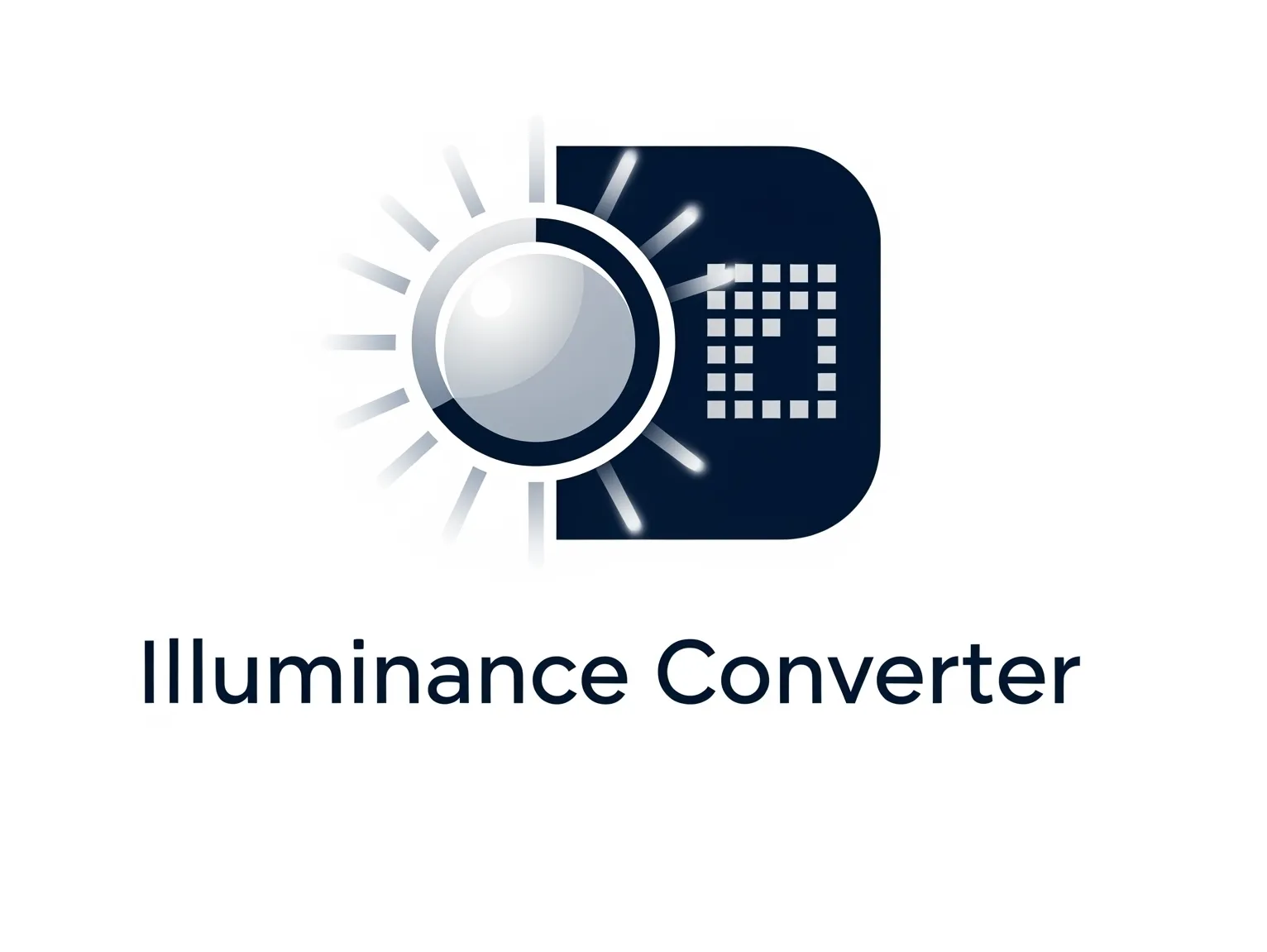What is an Illuminance Converter?
Illuminance is a measure of how much luminous flux (light) falls on a given area. In simpler terms, it's the intensity of light hitting a surface. It's crucial for determining if a space is adequately lit for a specific task, for setting camera exposures in photography, or for evaluating lighting efficiency.
An online Illuminance Converter is a specialized tool that allows you to translate light intensity measurements between different units. This is particularly important because various industries and regions use different standards (e.g., Lux in most of the world vs. Foot-candle in the US and UK). Our converter ensures accuracy and consistency in your lighting calculations.

Explore Common Illuminance Units
Our converter supports the primary units of illuminance, covering most applications:
The SI unit of illuminance, representing one lumen per square meter ($1 lx = 1 lm/m^2$). Widely used globally for general lighting measurements.
An imperial unit of illuminance, representing one lumen per square foot ($1 fc = 1 lm/ft^2$). Primarily used in the United States and some other English-speaking countries.
A CGS (centimeter-gram-second) unit of illuminance, equal to one lumen per square centimeter. 1 Phot = 10,000 Lux. Less common now, but found in older texts.
An older, less common unit of illuminance, equal to one millilux ($0.001 Lux$). Used for very low light levels, such as moonlight.
Understanding these units is crucial for ensuring proper lighting in various environments, from offices and homes to art galleries and industrial spaces.
Why Use Our Illuminance Converter?
Our online tool offers significant advantages for accurate and efficient lighting measurements:
Accurate Conversions
Utilizes precise conversion factors to ensure reliable results for all your lighting projects.
Instant Results
Get immediate conversions as you type or select units, saving valuable time in your design or measurement process.
Broad Unit Support
Convert across all major illuminance units, bridging metric and imperial systems seamlessly.
User-Friendly Interface
Simple dropdowns and clear input fields make the conversion process effortless for everyone.
Free and Accessible
Access this powerful tool anytime, anywhere, on any device, without any cost or subscription.
Versatile Applications
Perfect for lighting designers, architects, photographers, safety officers, and anyone optimizing visual environments.
How to Use Our Illuminance Converter
Converting illuminance measurements is quick and straightforward:
1. Enter Your Value
Input the numerical value of the illuminance you wish to convert into the designated box.
2. Select Your "From Unit"
Choose the original unit of your measurement from the "From Unit" dropdown menu (e.g., "Foot-candle," "Lux").
3. Choose Your "To Unit"
Select the desired target unit for your conversion from the "To Unit" dropdown menu.
4. View Your Result
The converted illuminance value will be instantly displayed in the "Result" area.
Key Illuminance Conversion Formulas (Examples)
All illuminance units are related back to the **Lux (lx)**, the SI base unit:
- 1 Foot-candle (fc) = $10.76391 lx$
- 1 Phot (ph) = $10,000 lx$
- 1 Nox (nx) = $0.001 lx$
These precise conversion factors ensure the highest accuracy for your lighting calculations.
Frequently Asked Questions (FAQ)
Lumen (lm) measures the total amount of visible light emitted by a source. Lux (lx) measures the illuminance, which is how much of that light spreads over a given area. So, lumens are the "output" of a light source, while lux measures the "light received" on a surface.
Lux is the standard unit in the International System of Units (SI) and is used globally. Foot-candle is an older imperial unit predominantly used in the United States and some other countries. Both measure the same physical quantity but use different unit systems (metric vs. imperial area).
Typical illuminance levels vary greatly: a bright sunny day can be 100,000 lux; an office workspace might require 300-500 lux; a dimly lit hallway could be 50-100 lux; and moonlight is often less than 1 lux.
Illuminance measurements are based on lumens, which are weighted to the human eye's sensitivity to different colors. So, while color temperature is a different property of light, the illuminance value itself already accounts for the perceived brightness of the light, regardless of its color.
Yes, our Illuminance Converter is designed with a responsive layout, making it fully functional and easy to use on your smartphone, tablet, or desktop computer.
Keywords for Illuminance Converter
Discover our versatile Illuminance Converter using these popular search terms:
- illuminance unit converter
- lux to foot-candle converter
- foot-candle to lux conversion
- phot to lux converter
- light intensity converter
- lighting design tool
- photography light meter conversion
- online illuminance calculator
- free illuminance conversion tool
- TechAI Study lighting units